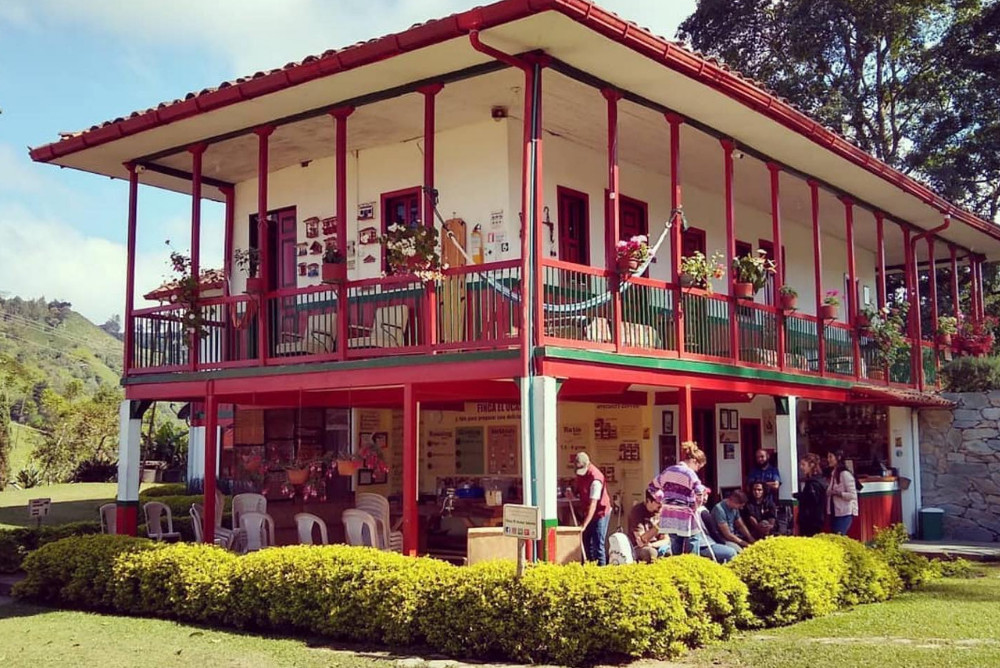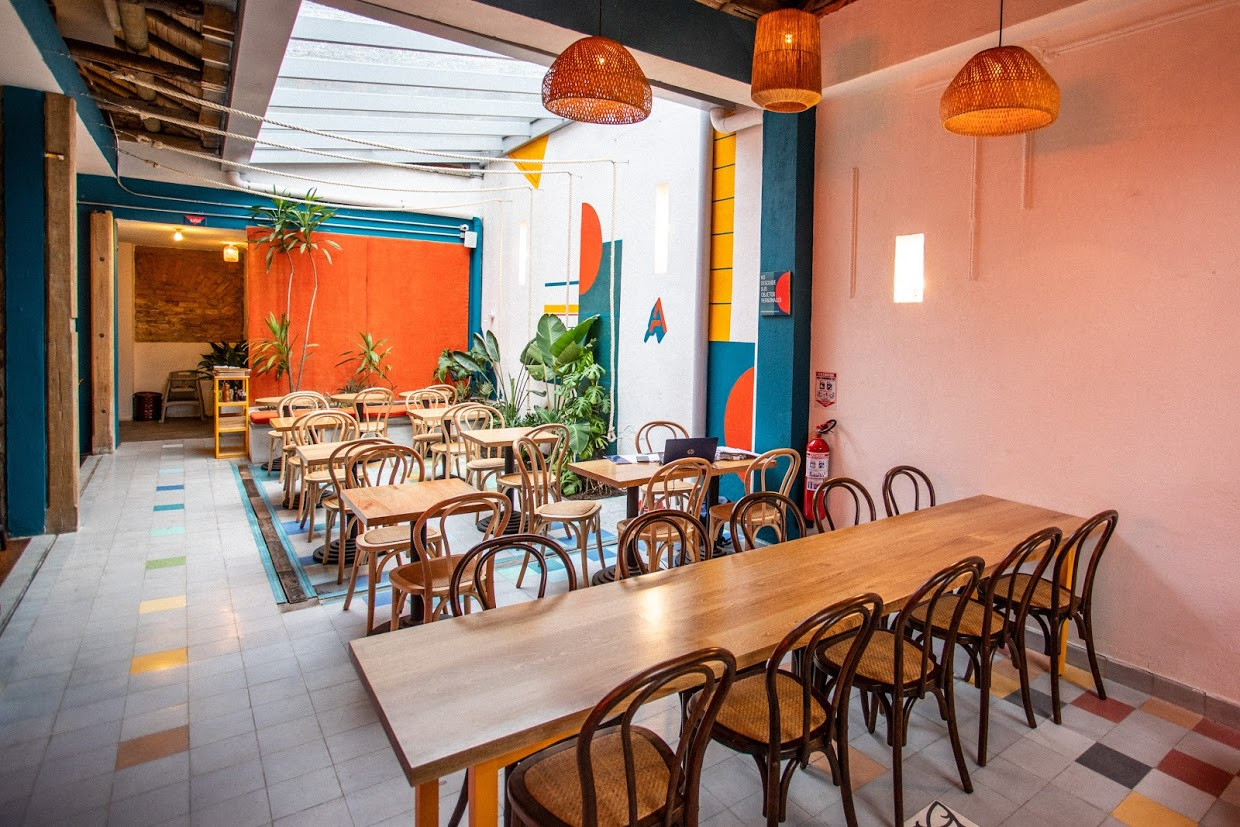It’s no secret that Colombia produces some of the world’s best-tasting coffee. In fact, it’s famous for the unmistakable mild, but rich, aroma that rises from every brew. In Colombia, coffee is much more than a hot beverage that gets you going in the morning before you head out the door. It’s a culture and lifestyle with its own traditions that has affected millions of lives and families over the course of generations. The Colombian coffee story is a beautiful one, and it’s the perfect starting point for any and all caffeine-fuelled adventures. So drink up and replenish your soul with nine of our favorite coffee experiences in Colombia.
Tour a Coffee Finca in the Zona Cafetera

Many traditional fincas (farms) in Colombia’s famed coffee region have opened their doors to tourism in recent years, ready to show caffeine enthusiasts from all around the world exactly what sets the local produce apart. Any visit to a finca is a glimpse into the creation process from seed to cup, with plenty of tasting along the way! Not only do most farms produce their own version of the bean, but they also have a unique story dating back generations.
Over a century old, Finca El Ocaso is a popular finca in Salento, the most-visited town in the Colombian coffee region. The property retains its traditional charm and offers different tours that allow you to discover the magic behind their unique brand of “Salento” coffee. Hacienda Venecia is another beloved finca that’s located in the middle of the lush Colombian jungle. The interactive tours offer the chance to really experience the aromas and flavors of different roasts.
Explore the Flourishing Artisanal Cafe Scene in Bogotá

In Colombia, most of the coffee beans from fincas are exported to commercial businesses around the world. Third-wave coffee is where the local scene is heading in Bogotá, as cafés strive to make the experience an artisanal one. The Colombian capital of Bogota is home to an endless amount of independent coffee shops that focus on green coffee beans (raw and unroasted), which are distinct from the commercial goods. The focus here is on the story of the local producers and unique flavors of different regions, meaning no two cups are ever the same.
From vintage cafés to hipster spots, Bogota has a café to satisfy your needs. Azahar Coffee is a popular café that deals directly with small and medium-sized farmers around the country. Their location in Bogota’s famous Parque 93 serves up small platters that allow you to taste the different blends of coffee with information about the story behind each.
Explore Colombia’s Famed Coffee Triangle

If you’re looking to get off the beaten path and find out-of-the-box things to do in Colombia, why not explore the Colombia Coffee Triangle? The region consists of the three states of Caldas, Quindío, and Risaralda, which are famous for producing the vast majority of the local product. Away from the crowds in Bogotá, Medellín, and Cartagena, this fertile area is nestled in the rolling mountains of the Cocora Valley, accessible only by car or plane. It’s such a thrilling region that it’s been declared a UNESCO World Heritage site, with towns like Salento and Pijao leading the way.
Here you’ll find colonial villages steeped in time, vast open landscapes that are ripe for growing coffee, and cultures that have been built around decades of coffee production. Through colorful plazas, local shops, and an excellent variety of restaurants, every fiber of the region has been influenced by Colombia’s most famous export – the perfect combination of coffee and culture. There are also ways to take advantage of the outdoor scenery, such as hiking, biking, and bird watching.
Stay at a Hostel Dedicated to Coffee

If you’re looking for a stay immersed in coffee, there are a ton of hotels and hostels that bring out the very best in the Zona Cafetera. Many position visitors within striking distance to the best fincas and offer excursions around the region, such as visits to Santa Rita Waterfall and Hot Springs, or Kasaguadu, a magical nature reserve. The Coffee Tree Boutique Hostel in Salento is a great example of this, allowing you to soak in the lush scenery of the region.
Get Your Heart Racing at the Parque Nacional del Café

Located just outside the city of Armenia, the Parque del Café contains everything from rollercoasters and waterslides to horseback riding trails and even a small coffee museum. This is the place to be if you’re looking for some coffee-flavored fun, as the theme park pays tribute to the 500,000 coffee-producing families that call Colombia home.
The park is the ideal mix of fun, scenery, adrenaline, art, adventure, and of course, coffee. Head to the lookout tower for great views of the city of Armenia and the surrounding landscape, while the cable car provides a birds-eye view for those who want to take it a step farther.
Witness History at La Victoria Coffee Plantation

Colombia’s oldest working coffee plantation certainly deserves a visit during any caffeine-tinted itinerary. Dating back to 1892, La Victoria was founded at the foothills of the Sierra Nevada de Santa Marta mountains in the tiny town of Minca.
Step back in time through the old-style buildings and see how the farm is entirely self sustaining, running on nothing but water from the surrounding mountain streams. It shows a glimpse into Colombia’s history of coffee production from the very beginning. You can also find a small artisanal brewery that produces handcrafted beer with fresh water from the Sierra and local products, such as coffee and coca leaves.
Unleash Your Inner Barista at the Café de Arte y Pasion

A mainstay among the coffee circuit in Bogotá, Café de Arte y Pasion also offers courses that teach the fundamentals of being a barista. What began as a way to educate customers about the wonders of specialty Colombian coffee became a hands-on barista training school, plus a cozy coffee shop where art and passion come together.
Choose between a one-day, 8-hour or 16-hour weekend course to develop your skills and sense with everything from the preparation, processes, and techniques. Want to take it a step farther? There are also intensive classes, up to 48 hours, that are completely personalized, and include skills such as Latte Art. The coffee shop itself offers 12 Colombian single origins, eight brewing methods, and expert baristas working their magic.
Expand Your Tastes at a Cacao Farm

The perfect complement to coffee? Chocolate! Visiting a cacao farm allows you to enjoy two of Colombia’s most delicious treats in one go. Chocolate tours, such as that from Medellin Day Trips, will have you salivating as they walk you through the process of turning cacao fruits into high-quality artisanal chocolate. Oh, and don’t worry, tasting is included, from different derivatives with added milk or sugar, to a cup of hot chocolate for the ride back.
Visit a Juan Valdez Cafe

Juan Valdez is Colombia’s iconic coffee chain. Think of it as the Colombian Starbucks; it can be found pretty much anywhere across the country. But it’s definitely a must, even if just to say you’ve been.
The iconic Juan Valdez is a fictional character who’s come to be the face of the everyday Colombian coffee farmer. He was created with the proud purpose of distinguishing 100% Colombian coffee from those blended with beans from other countries.
There are some specialty cafés, such as the location in Zona G in Bogotá, that specialize in single-origin coffee from around the local region, but generally Juan Valdez is just a staple of everyday life.